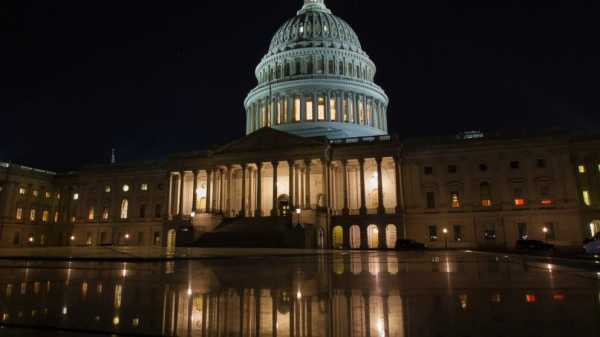Energy storage facilities have a chance to become an element of critical infrastructure in Poland. Representatives of Santander Bank Polska, Elmech-ASE, Enspirion, Center for Analysis of Economic Reforms and Communication, Naatu Operator, PGE Dystrybucja and Huawei Polska discussed what to do to make this happen and how to ensure the safety of such installations.

Nearly a thousand people took part in the first edition of the Power Connect Energy Summit. CEOs of the most important state-owned companies, politicians, businessmen and experts came to Gdańsk.
On Wednesday, March 26, the most important players in the industry discussed how to use energy storage to ensure energy security on a local and national scale. As Bartosz Ziółek from Santander Bank Polska noted, this topic was treated as a technological novelty a few years ago. Now, energy storage is a critical parameter, especially in the case of renewable energy sources, where energy is produced unevenly.
Storage facilities allow for safe storage of surpluses, but their main function is to ensure the stability of supplies. However, in Poland, the numbers contradict this. According to data from the Energy Regulatory Office, there are currently twelve energy storage facilities in our country with a capacity of at least 50 kW, the largest of which are pumped-storage power plants, constituting 85 percent of the total capacity of registered storage facilities. For comparison: there are twenty times more such installations in Germany. In turn, France is building a huge battery energy storage facility with a capacity of 200 MW.
Bartosz Ziółek cited data showing that over the next three years Poland plans to increase its energy storage capacity to approximately 3 GW.
“How to achieve this? Through regulation?” – the representative of Santander Bank Polska inquired. He gave China as an example, where until recently local power plants that wanted to connect to the grid had to install energy storage facilities.
The first to respond was Mariusz Podkański, vice president of PGE Dystrybucja. “If such legislation had been created in Poland at the very beginning of the energy transformation, today the headache of distribution and transmission system operators would be smaller. Currently, in Poland we have about 22 GW of photovoltaic capacity, of which almost 12 GW is produced by prosumer installations, i.e. installed by private individuals and small companies. We need to focus more on large installations, and with them – energy storage,” he said.
Growing awareness of energy management and availability of solutions
However, the participants of the discussion agreed that awareness of energy management is growing in Poland. Local governments and entrepreneurs are looking for savings, because increasingly high electricity bills are draining their budgets.
“This is still the beginning of the road. Competences are a bit behind, but the situation is improving, because with a well-arranged energy infrastructure you can find both savings and profits,” admitted Marcin Szpak, president of the Pomeranian company Naatu Operator.
He used his own backyard as an example. The Pomeranian Voivodeship is working on creating an archipelago of energy islands. In short, the idea is for the coastal region to become independent, meaning it will produce as much electricity as it consumes, and energy storage facilities are to help with this.
“How to use the experience of a larger market?” Bartosz Ziółek asked Ryszard Hordyński, Director of Strategy and Communication at Huawei Polska. It is no coincidence, because the popular company – in Poland associated mainly with smartphones – has contributed a lot to China's energy transformation. In addition, four years ago the company began building the largest energy storage facility in the world in Saudi Arabia – its capacity will be 1.3 thousand MWh and it will store energy produced at a photovoltaic farm located on the coast of the Red Sea.
“But that's not all. We offer inverters, photovoltaic installations, chargers for electric cars, but also autonomous cars,” Ryszard Hordyński listed, adding that the type of support the company can provide depends on demand. “We can prepare installations that are independent or coexisting, it all depends on our customer's preferences,” the Huawei Polska director emphasized.
Different investment motives
Arkadiusz Marat, president of Elmech-ASE, noticed that investors – medium and large enterprises are leading the way – are increasingly looking at energy storage facilities, although it was different for years. They were primarily motivated to act by financial concerns. “I often hear from clients that, above all, 'the bill must match'. This business model works, of course, but there is a lack of strategic, forward-looking thinking. Although there is a program that directly refers to maintaining energy security,” emphasized Arkadiusz Marat.
This concerns the “Energy Storage Systems” program launched in February 2025. It is being piloted by the National Fund for Environmental Protection and Water Management. The subsidy pool is almost PLN 900 million.
Grzegorz Wałdoch from Enspirion, part of the Energa Group, had a different opinion. He pointed out that large companies are aware that they must take care of their own energy security and that is why they invest in storage facilities. Because state-owned power plants – rarely, but still – record the so-called recall period on the capacity market. Behind it is a situation that shows that electricity production may be too small compared to the forecasted needs. “We have about 1.6 GW of capacity stored nationwide to react in the event of critical situations. However, it is time to go further and store more power on our own account,” encouraged Grzegorz Wałdoch.
He added, however, that small and medium-sized companies feel that since they pay for energy, they can only demand its delivery. – Nothing could be further from the truth. Sooner or later, they will also have to take care of their energy security – the expert argued.
According to Arkadiusz Marat, banks are in a similar trap, treating storage facilities as a novelty and approaching investment financing with caution, because they are not sure whether this is a future direction: “However, this is a technology that is constantly being developed. New elements from the field of chemistry are being introduced, such as sodium. This allows for obtaining increasingly better parameters – greater battery longevity – and energy storage facilities will become a permanent element of the landscape,” explained the president of Elmech-ASE.
A matter of safety
During the debate, they also discussed how to protect infrastructure and systems that may become critical in the near future.
“Everything begins and ends with humans. We are the ones who come up with the components of security in the form of regulations and certificates, which we combine with technology. And let's be consistent: if we have secure tools and regulations at hand, let's just use them.”
For Ryszard Hordyński, the keyword is “cybersecurity”: “Today we have the possibility of energy storage operating in a galvanic network or via private internet and this will play an increasingly important role, but people and compliance with regulations are still key,” he explained.
Finally, Bartosz Ziółek asked the discussion participants what, in their opinion, will accelerate the development of the energy storage sector.
According to Marcin Szpak, this change will happen from the bottom up: “The debate in Poland about energy storage is at a lower temperature than in the case of nuclear power plants or photovoltaic farms. However, we have great potential for our companies to play a major role in the supply chain. There is a huge niche to be filled,” argued Marcin Szpak.
In turn, according to Ryszard Hordyński, the most important problem is the prolonged procedures related to, for example, building and connection permits: “Our energy storage could be delivered and operating in Poland within three months, but obtaining all the permits alone would take two years,” said the Huawei Polska representative.






